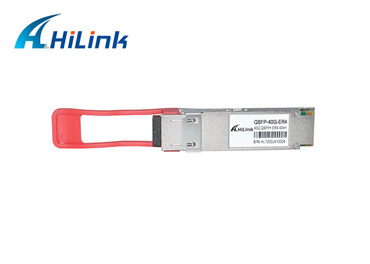40G Optical Module: The Optimal Solution for 10g Network Upgrade Bottleneck
Jul. 02, 2021
40G, the dominant high-speed transmission technology of today, highlights the current state of network bandwidth bottlenecks faced by high traffic services. The growing demand for optical modules in enterprise networks and data centers - the popularity of 40G QSFP+ optical modules is the main reason for this growth. This has inevitably led to a debate about the place of 40G networks in the market: Is this a temporary pavement for the transition to 100G? Or is there a long-term, more sustainable, and stable market for 40G networks?
The 40G optical module market is dependent on the rapid growth of data centers
Datacenter demand for optical modules accounts for 65% of the overall 10G / 40G / 100G optical module market for telecom and datacom, essentially driving the overall growth in optical module sales. As data centers begin to deploy high-bandwidth 40G networks, the market is seeing a surge in demand for QSFP+ optical modules, especially when used as high-density 10G interfaces over branch cables. Demand for 40G optical modules for single-mode fiber is also growing due to high demand from Internet content providers Microsoft and Google. While the market for 10G optical modules remains strong, the use of 40G optical modules as high-density 10G interfaces is beginning to inhibit the growth of 10G optical modules.
40G Optical Module
40G QSFP+ Optical Modules: A Promising Step Toward Higher Capacity
To accommodate the explosive growth in data traffic, enterprises and service providers are deploying higher bandwidth and more expensive ports in network construction. It is believed that this trend will continue in the coming years. 40G networks are now the new high-growth market and have become the first choice for data centers. Even though we have started to see growing interest in 100G solutions in the commercial market, the demand for 40G optical modules remains steady. 40G networks are deployed widely and deeply, and 40G is an essential and important technology in critical areas such as metro, subsea and other situations where there is no necessary reason to use 100G networks.
With the growth of 40G networks, Small Form Factor Pluggable (QSFP) has become the preferred high-density optical module. By deploying 40G line cards, data center space costs will be greatly reduced, and both CAPEX (capital expenditure) and OPEX (operational expenditure) can be effectively saved.
40G is everywhere and 100G is coming at an accelerated pace
The future is bright for 40G and even 100G, and a higher speed of 200/400G is already available. Meanwhile, 10G/ 40G ports are still available. The Ethernet Alliance says that not all networks need to run at the fastest speeds. The need for speed is actually application-dependent, and in some applications, lower rates will suffice. So far, 10G / 40G links can serve many applications well (and maybe considered low speed in the future).
The 40G market will eventually enter the general deployment phase. Consumer demand is putting pressure on network capacity and as long as this dynamic remains intact, 40G network deployments will continue to grow at a healthy rate. In order to move the market toward mass adoption of 40G, the industry is now working to reduce the cost of deploying 40G networks. Flying Speed (FS) 40G optical modules have won widespread acceptance from users for their significant advantages in compatibility and extended transmission distance.












